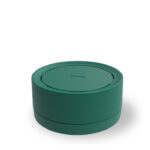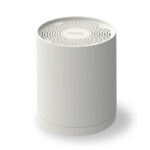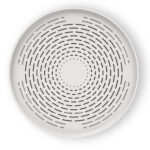Monitoring indoor spaces for greater safety and environmental comfort

Indoor air quality and health

Lately, the issue of indoor air quality has been increasingly in the spotlight. This is partly because of the COVID-19 pandemic that has led us in recent years to pay more attention to what we breathe indoors especially when we share spaces with other people.
Air quality is a crucial element in preserving people’s health and safety. Breathing polluted air for a long time can cause a number of adverse health effects, including respiratory problems, heart disease, lung damage, and even premature death.
Ensuring good air quality is critical to protecting people’s health and safety. Through active and constant monitoring of environmental parameters, related risks can be prevented. Knowing what we breathe is the starting point for a healthy lifestyle.
What are the sources of indoor pollutants?

There are several sources of indoor air pollution.
Some cleaning products contain chemicals namely volatile organic compounds that, as they are used, release toxic particles into the air that we end up ingesting.
Tobacco smoke contains numerous pollutants, including volatile organic compounds and fine particulate matter that can have harmful effects on respiratory health and beyond.
Materials used in construction and furniture can release harmful chemicals into the air, such as formaldehyde and volatile organic compounds (VOCs). These materials include paints, adhesives, pressed wood furniture, and carpets.
Leaks of natural gas or that from heating, cooling equipment or kitchen stoves can cause a buildup of harmful combustible particles inside homes.
The presence of mold, dust and pet hair in our homes can release spores and other allergenic substances into the air, causing respiratory problems and allergies.
It is clear that there are numerous sources of pollution inside our homes that contribute to worsening air quality, putting our health at risk.
Why is it so important to control and know what we breathe?

Everything we breathe has a direct impact on our well-being: poor air quality, in addition to affecting our health, can lead to sleep disturbances and consequently a psychomotor slowdown in the days ahead. Pollutants in indoor air, such as fine dust, allergens, chemical fumes and mold, can irritate the respiratory tract, causing coughing, nasal congestion and respiratory discomfort. These symptoms can make it difficult to fall asleep or stay asleep during the night.
Because we spend much of our time indoors, where pollutants reach the most critical values, the quality of the air inside our homes, schools and workplaces can have a significant impact on our overall health and well-being.
Knowing the quality of the air we breathe enables us to take preventive measures to protect our respiratory health and reduce all related risks.
The Radoff Solution

Radoff has designed innovative devices that perform comprehensive and accurate monitoring of indoor air quality.
The Air Quality Index (AQI) and individual parameters are measured and displayed in real time on a smartphone app.
The problem and awareness of indoor pollution is growing rapidly, and the interconnectedness of various pollutants is becoming increasingly apparent.
Unlike most conventional products currently on the market that analyze environmental parameters in isolation, Radoff correlates the different measurements in real time and provides useful advice that can be put into practice if air quality improvement is needed.
Radoff has always had only one goal: to protect people’s health and the environment we live in to ensure a healthy and safe life.







